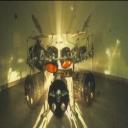Yahoo Answers is shutting down on May 4th, 2021 (Eastern Time) and beginning April 20th, 2021 (Eastern Time) the Yahoo Answers website will be in read-only mode. There will be no changes to other Yahoo properties or services, or your Yahoo account. You can find more information about the Yahoo Answers shutdown and how to download your data on this help page.
Trending News
Basic Summary of the Russian Revolution?
Can somebody give me a basic summary of the Russian Revolution in 1917? Like some of the reasons why it happened and who were the main leaders of it? Thanks.
2 Answers
- SpellboundLv 71 decade agoFavorite Answer
You have a very good summary of the February Revolution.
Here are the main events of the October Revolution, when the Bolsheviks seized power:
The April these - Lenin outlines his aims and a programme for the Bolsheviks to take power.
The July Days - 3rd - 7th July. Strikes in Petrograd cripple the city. The Bolsheviks try to impose their leadership on the strikes. The strikes are brutally put down - Lenin goes into hiding, many Bolsheviks arrested.
The Kornilov Affair Late August early September - General Lavr Kornilov, the commander-in-chief of the army attempts to march an army to Petrograd. The Provisional Government release the Bolsheviks and ask Lenin and the Bolshevik Red Guards to help prevent the attempted coup; the Red Guard were given arms by the government. Kornilov is seen off as his cossacks desert him.
September & October - strikes in much of the country, especially in the important industrial areas: Petrograd, the Donbas, Moscow, Baku and the Urals. Peasant uprisings increasing, and becoming increasingly violent, with manor houses burnt and their occupants lynched.
Bolshevik agitation increases - they are leading the strikes, taking over the key posts on many soviets, and, in the army and navy, their influence is getting stronger - especially in the island fortress of Kronshstadt. By October, many garrisons issue proclamations saying that they do not recognise the authority of the Provisional Government.
October 25th 9:45pm - the Battleship Aurora, stationed in Petrograd, fires a single blank shot. This is the signal that Vladimir Antonov-Ovseenko has been waiting for - he leads his men to the Winter Palace - the home of the Provisional Government. The palace is guarded by a women's' battalion, some cadets and some cossacks. By 2am, with very little bloodshed they had secured the building - the Provisional Government fled - and the next day Lenin took office as the Chairman of the Council of People's Commissars, the new, Bolshevik, head of government.
The reasons for the October Revolution were that the February Revolution lacked democratic legitimacy. The Provisional Government was the re-constituted last State Duma, with few monarchist deputies arrested. It refused an election to a promised interim government - the Constituent Assembly - saying that Russia would hold elections after the war.
The Petrograd Soviet was seen by many as a genuinely democratic institution, as it's members were elected to it from the garrisons and factories of the capital.
The Bolshevik slogan "Bread, Land and Peace" sum up the other factors: The cities were starving as the peasants were now in uniform fighting in the war - they could not plough, sow or harvest the crops. And the food delivery infrastructure had broken down. The peasants wanted the Provisional Government to give them the land they worked on - it didn't, and the most of the land was still owned by the aristocracy. And Russia was doing badly in the war and most people wanted Russia to withdraw from it.
See:
The October Revolution by Roy Medvedev
The Russian Revolution by Sheila Fitzpatrick
http://www.spartacus.schoolnet.co.uk/RUSmarchR.htm
- 1 decade ago
If your looking solely on 1917 then it starts in February/March (depending on which calendar you go by). In 1917 there is 2 recognized revolutions, the revolution of February and the revolution of October. In February workers in steel factories (Putilov Steel Factory St. Petersburg/Petrograd) get locked out of their work places over disputes about their pay and working conditions, the workers then go on strike. Now because at the time the war was going on and Russia was not in very good shape, the general population was unhappy with the Tsar and his government, inflation was occurring, the people were hungry, huge losses were being inflicted at the war front and many troops were then deserting from the fronts. But back to the strikes, when these strikes occurred, because of the discontent in the city, the next day when the strikes contiuned the number of people participating rose from 30,000 to 250,000 (approximate numbers). Eventually the police and troops are called in, violence occurs and the workers take over the city of Petrograd. Soldiers change sides and now support the revolutionaries. Workers/revolutionaries call for the abication of the Tsar, Tsar Nicholas II abicates on the 2 March 1917 ending the Romonov dynasty. A Provincial Government is set up to run the country. During the February revolution there isnt really any key leaders, it is more spontaneous action occurring out of the circumstances.
For the October revolution Lenin is brought back into the country by the Germans (Lenin wanted Russian out of the war, so the Germans wanted to help him) and he stirs up support for the Bolsheviks and takes over the government and creates a communist government. (Sorry about the lack of detail about October, haven't learnt much about it yet)
Source(s): Studying Russian revolution at the moment






